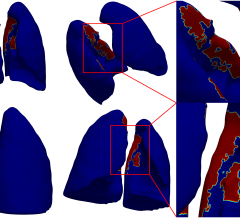
June 6, 2013 — The National Institutes of Health (NIH), the nation’s medical research agency and the leading supporter of biomedical research in the world, said all of its clinical programs will be effected by $1.55 billion in NIH budget cuts due to sequestration. On March 1, 2013, as required by statute, President Obama signed an order initiating sequestration. This requires NIH to cut 5 percent, or $1.55 billion, of its fiscal year (FY) 2013 budget. NIH must apply the cut evenly across all programs, projects and activities (PPAs), which are primarily NIH institutes and centers.
More than 80 percent of the NIH's budget goes to over 300,000 research personnel at more than 2,500 universities and research institutions throughout the United States. In addition, about 6,000 scientists work in NIH’s own Intramural Research laboratories, most of which are on the NIH main campus in Bethesda, Md. The main campus is also home to the NIH Clinical Center, the largest hospital in the world totally dedicated to clinical research.
The Estimated Numbers
In comparing FY 2013 figures to FY 2012, NIH has arrived at the following estimates for cuts.
- Approximately 700 fewer competitive research project grants issued
- Approximately 750 fewer new patients admitted to the NIH Clinical Center
- No increase in stipends for National Research Service Award recipients in FY2013
The Impact of Cuts
NIH said the cuts will delay medical research progress. Medical breakthroughs do not happen overnight, NIH said. In almost all instances, breakthrough discoveries result from years of incremental research to understand how disease starts and progresses. Even after the cause and potential drug target of a disease is discovered, NIH said it takes on average 13 years and $1 billion to develop a treatment for that target.
Therefore, cuts to research are delaying progress in medical breakthroughs, including:
- Development of better cancer drugs that zero in on a tumor with fewer side effects,
- Research on a universal flu vaccine that could fight every strain of influenza without needing a yearly shot, and
- Prevention of debilitating chronic conditions that are costly to society and delay development of more effective treatments for common and rare diseases affecting millions of Americans.
Reductions to noncompeting research project grants (RPG) vary. The NIH-wide average is -4.7 percent.
Institutes and centers have flexibility to accommodate the new budget level in a fashion that allows them to meet their scientific and strategic goals. As noted above, there are different percentages for different Institutes and Centers (ICs), and in some cases for different mechanisms within an IC (RPGs, Centers, etc.). In addition, there may be reductions to grants for reasons other than sequestration, as is the case every year.
The impact on NIH’s intramural research at its Bethesda, Md., campus and off-campus facilities is substantial, NIH said. This is because it applies retroactively to spending since Oct. 1, 2012. That can double the effect — a full year’s cut has to be absorbed in less than half a year.
There are no current plans to furlough or cut employees. At present, HHS is pursuing non-furlough administrative cost savings such as delayed/forgone hiring and reducing administrative services contracts so that furloughs and layoffs can be avoided. Additionally, employee salaries at NIH make up a very small percentage (only 7 percent) of the NIH budget.
Approximately 750 fewer new patients will be admitted to the NIH Clinical Center hospital in 2013 or a decrease from 10,695 new patients in 2012 to approximately 9,945 new patients in 2013. While much of this decrease is due to funding, clinical activity is always a dynamic situation with multiple drivers.
For more information: www.nih.gov


 November 11, 2025
November 11, 2025 









